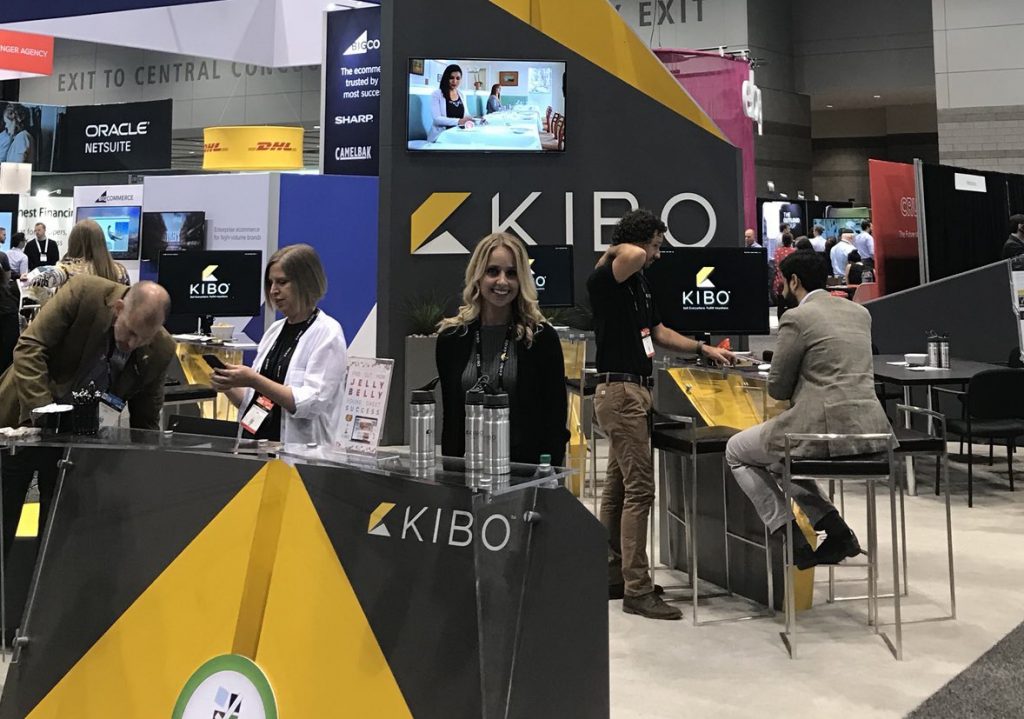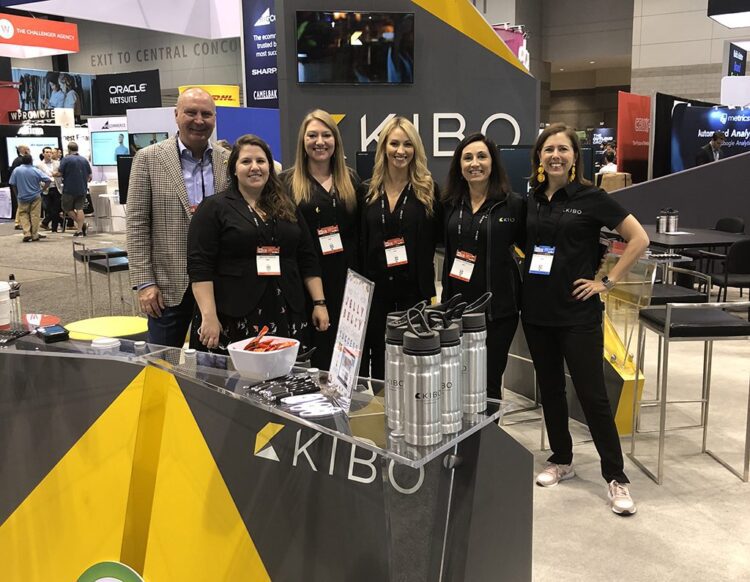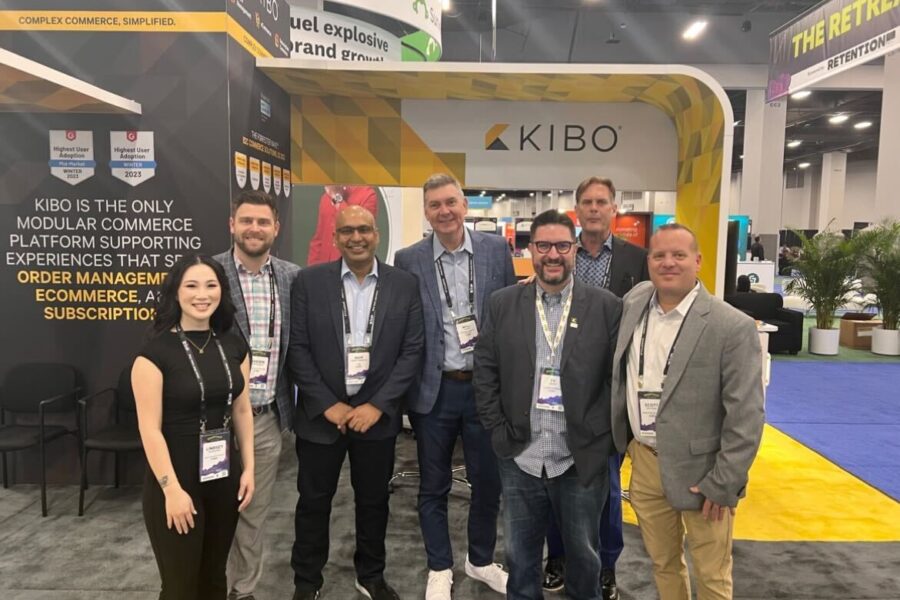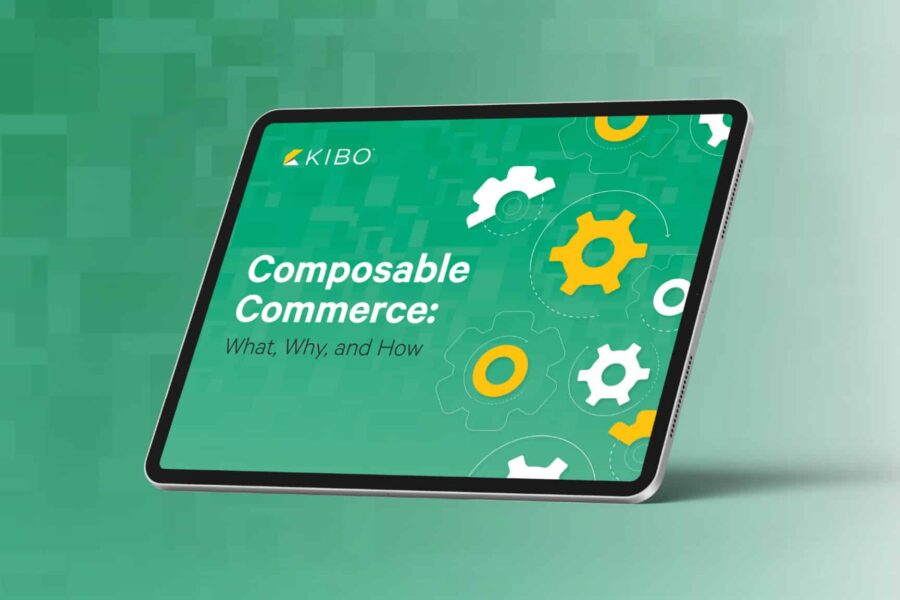With the first half of 2018 coming to a close, this year’s Internet Retailer Conference and Exhibition (IRCE) served as a motivational jumpstart to what will surely be an exciting second half of the year in the world of retail. Over four days, nearly 10,000 attendees rushed from room to room in Chicago’s McCormick Place West to soak in industry insight shared by 200 speakers from organizations leading the commerce charge. When class was not in session, attendees visited more than 600 vendors to talk strategy and all things eCommerce in the high-energy exhibitor hall.
Considered one of the big three must-attend events in the retail industry, the 2018 iteration of IRCE did not disappoint. This year’s event delivered even more retail tech and expertise, with pre- and post-event workshops that provided deep dives into some of the most prominent retail themes including marketplaces and B2B. Between meeting with enthusiastic merchants and tech partners, a few members of the Kibo team were able to attend industry sessions to hear what retail leaders are talking about and working towards. Several key themes emerged at IRCE this year:
The entrepreneurial spirit is stronger than ever.
From the moment the exhibitor hall opened on Tuesday evening through the final minutes on Thursday afternoon, it was evident that the entrepreneurial spirit is alive and stronger than ever. Despite constant headlines about the Amazon effect on retail, IRCE proved that retailers of all size are less intimidated by the dominance of Amazon and other big-box retailers, and instead are more motivated to specialize in their craft and offer customers novelty which giants like Amazon cannot deliver.
In fact, independent retailers made up a sizable portion of the attendee list, which is reflective of market trends as more and more independent brands and retailers open stores for the first time. The differentiator for these often digitally native merchants is their hyper-focus on building a strong customer community and consistently offering interesting elements of the in-store experience to drive foot traffic. These entrepreneurs have learned from first-hand experience and the experiences of those before them that there must be a compelling reason for customers to step foot into a physical store when the online channel lends itself to convenience. Amazon is a commodity market where price drives competition, so it comes as no surprise that these fresh, agile retailers are choosing to compete where they differentiate.
Marketing guru Seth Godin kicked off the first official day of the event with a message speaking to this point, which the audience carried into conversations well after his closing remarks. Throughout his keynote, Godin emphasized the power of leveraging niche markets to rise above the noise. He reiterated that even small brands can and will thrive against Amazon by narrowing their focus and building direct, personal relationships with the people that buy and love their products. This inspiring mantra aligned especially well with the small to midsize retailer audience.
Retail is in the midst of a long overdue transformation, and although newcomers to the space don’t necessarily face the same headwinds as their predecessors, the shift can be challenging. To rise above the noise, merchants must be relentless in their pursuit to build deeper connections with smaller subsets of the market rather than attempt to be all things to all people. Winning at retail means embracing the entrepreneurial spirit and maintaining a clear view of the customer despite the dynamic environment.
“In a crowded marketplace, fitting in is a failure. In a busy marketplace, not standing out is the same as being invisible.”
– Seth Godin, Author
We’re all in this together.
The ecosystem is a critical component to any digital commerce strategy and allows merchants to better address pain points and drive revenue. Third-party technology vendors, service providers, and strategic partnerships with industry influencers and complementary brands make it possible to reach more customers in more ways without requiring huge investments. While the benefits are numerous, perhaps most comforting is the fact that ecosystems mean that merchants are not in this alone.
As a go-to retail event, IRCE hosted a wide range of technology and service vendors, providing something for every retailer regardless of budget or evolution along their eCommerce journey. The Kibo team visited with friendly faces from some of our current partners and talked business with a number of potential partners interested in joining our thriving ecosystem.
From sessions about optimizing the ecosystem and best practices for evaluating potential vendors, the clear message is that ecosystems facilitate rapid innovation and allow merchants to live in the possible, not the probable. Partner ecosystems address the “buy versus build” dilemma organizations often face. Ecosystems increase the speed of retailer innovation and allow organizations to introduce new capabilities without having to develop the expertise internally. Thanks in large part to the power of APIs, teams can remain focused on core competencies and launch new initiatives with less technical know-how in less time than ever before.
The onslaught of store closures and overhyped mentions of the imminent death of retail in headlines over the last year indicate that disruption is the new norm. Yet, by securing the right partnerships, merchants will be in a better position to respond to the changing landscape and align forward-looking priorities and investments to future growth.
For bigger payoff, think payments.
While the payment industry may not always receive the same level of attention as artificial intelligence or social commerce, IRCE reminded us that payments are a core enabler for commerce and top of mind for many merchants.
The fragmented nature of the payments industry makes it an especially tricky space to navigate. Despite recent consolidations between payment vendors and banks, merchants and their customers have an abundance of options at their fingertips. However, resource constraints and heightened concerns about fraud have made it difficult to determine which to support and which to forego.
IRCE provided attendees with some clarity on the topic through content and conversations with providers and peers. Numerous sessions emphasized the importance of payment technology and shared predictions about what’s on the horizon. On the exhibitor floor, attendees received first-hand demos and industry insights into new and emerging capabilities such as the “buy now, pay later” model, social commerce, and digital currencies.
A key message woven into industry sessions and conversations with exhibitors focused on the impact of mobile on the evolution of payment technology, as well as its influence on customer expectations. Mobile is already an integral part of eCommerce and industry experts anticipate mobile-friendly payment options will soon become an even more important. Estimates from a recent Business Insider Intelligence study suggest that by 2021, 45% of all online sales will originate on mobile devices. The sheer growth potential of mobile commerce makes it a key driver for what is next in payment space.
Technology decisions, especially those that are mission-critical to the business and customer experience, are about striking a balance. Payment solutions that accomplish the goal of capturing payment information are not necessarily synonymous with a great digital experience and are no longer sufficient enough to compete in today’s highly competitive landscape. Merchants need to offer the options customers want without requiring them to sacrifice something else they want – convenience, security, or preference. The overall payment experience is a major driver of revenue and conversions, so the merchants that get it right are slated for even bigger payoff in 2019.
Prioritize getting products to where the customers are.
As the last several years have taught us, malls and standalone stores are no longer the first stop on the shopper journey, and in some cases, not a destination at all. Brands that relied on distribution through big-box department stores and their retailer counterparts that huddled around these anchor stores to attract customers are experiencing the pinch of declining traffic. As brick-and-mortar stores remain in retail ICU, merchants are taking the competition to a new field – marketplaces.
Marketplaces proved to be a hot topic at IRCE, both on the exhibitor floor and in industry sessions. Internet Retailer (IR) grabbed the attention of a packed room as they recapped the last year and shared predictions for what we can expect in terms of marketplaces moving forward during their overview session. The IR team analyzed 75 of the most prominent marketplaces worldwide and found that shoppers spent $1.5 trillion globally last year, representing roughly 50% of all global online sales. The usual players continue to lead the pack in the US marketplace race with Amazon, Walmart, and eBay coming in at the top of the list, followed by Houzz and Wish.
The IR study also revealed a likely more surprising insight – a customer’s online search often starts on marketplaces, not search engines. Between the shift in how customers research products and the high adoption rate of these aggregator sales channels, it’s clear that marketplaces aren’t going anywhere and show no sign of slowing down in the foreseeable future. Even well-known brands like Ikea and Chico’s are joining the movement by selling on Amazon.
Thankfully, there is ripe opportunity to capitalize on the marketplace madness without relying on the likes of Amazon or eBay. As the IR session highlighted, niche marketplaces are continuing to pop up and increasing in popularity on a global scale. This gives merchants an alternative channel to reach customers without relying on listing products on the site of what many consider to be their biggest competitor. Similarly, there are a number of brands launching their own marketplace variations to take part in the successful model. Walmart, for example, continued to invest in their online marketplace by increasing the number of SKUs on their website from 35 million to 75 million in 2017.
While the marketplace conundrum is nothing new, it’s undeniably clear that retailers and brands need to develop a marketplace strategy that closely aligns with the customer journey and compliments their go-to-market strategy. Marketplaces are the digital equivalent of malls, helping to hybridize brands and make them more accessible to more people. Merchants that prioritize getting products to where their customers are, whether on marketplaces or elsewhere, will be the ones that come out on top in the retail battle.
It’s time to get back to basics.
Despite all of the exciting technologies displayed at IRCE, the “back to basics” theme popped up in sessions about AI to building loyalty and even made its way into conversations on the exhibitor floor. The shift in retail from transactional to experiential has increased the importance of building your tribe and interacting with customers in a personal way.
In a joint session hosted by Dream Beard and Chewy.com, the customer-obsessed e-tailers discussed how their companies develop strong loyalty through high-touch customer service and reiterated the idea that new technology does not always translate to new customers or higher sales.
Ryan Lane, the founding owner of Dream Beard, kicked off the session by emphasizing his goal of creating personal interactions with each customer by empowering employees. Autonomy is the secret ingredient to the Dream Beard customer service approach, and Lane shared that employees are free to get creative as long as customers are treated well. The founder also described how the company uses handwritten notes and a lifestyle podcast as ways to build deep-rooted customer loyalty. For Dream Beard, it’s all about breaking down the communication walls that technology can sometimes create.
Discussions on the exhibitor floor echoed similar ideas as attendees visiting the Kibo booth shared insights about their renewed focus on the customer experience and the operational hurdles they must overcome. Rather than trying to do everything for the sake of checking a box, IRCE attendees seem to share a methodical focus on perfecting their craft and simplifying the technology stack to optimize teams. What matters most is not whether a merchant possesses a specific capability, but that the capabilities they do have translate into great customer experiences and revenue.
The takeaway: it’s not about digital versus physical channels, or even being omnichannel – it’s about making your brand accessible and unique by opening up the channels that matter most to your customers and building genuine relationships for the long-term. The key to winning in retail for 2018 and beyond is organizing companies around the customer and acknowledging that at the end of the day, the only experience that matters is theirs.
“You have to prioritize making the customer experience the most seamless, inspirational, frictionless thing. If you don’t, every piece that adds friction, every piece that doesn’t meet their expectation, you can lose sales.”
– Joan King, VP of E-commerce, Crate & Barrel

Mykayla Goodwin, Product Marketing, KIBO, IRCE 2018




